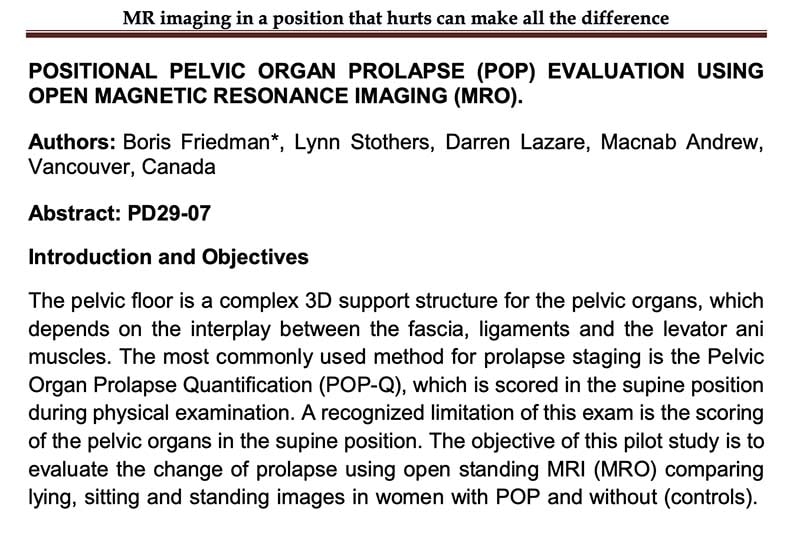The pelvic floor is a complex 3D support structure for the pelvic organs, which depends on the interplay between the fascia, ligaments and the levator ani muscles. The most commonly used method for prolapse staging is the Pelvic Organ Prolapse Quantification (POP-Q), which is scored in the supine position during physical examination. A recognized limitation of this exam is the scoring of the pelvic organs in the supine position. The objective of this pilot studyis to evaluate the change of prolapse using open standing MRI (MRO) comparing lying, sitting and standing images in women with POP and without (controls).
NEWS
Patient
After a shoulder injury, this patient discovers the comfort [...]
Patient
Innovative Open MRI's positioning ability finds one patient's previously [...]
Patient
After dealing with years of struggling with Post Traumatic [...]
Patient
This patient's increasing claustrophobia left him dreading necessary MRI [...]
Patient
A child suffering from Asperger syndrome, Tourette syndrome, and [...]
Patient
After many tests, including traditional MRIs, this patient's lengthy [...]
DISCOVER MORE







